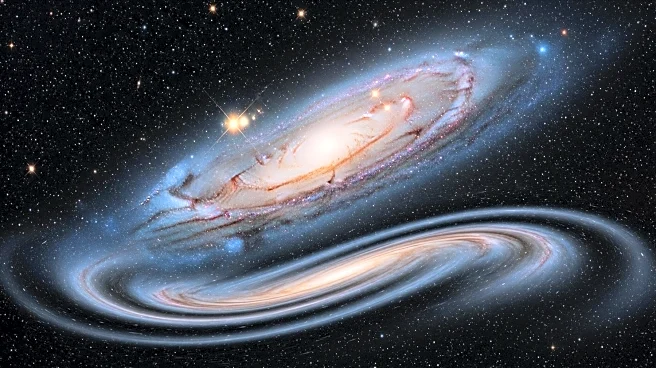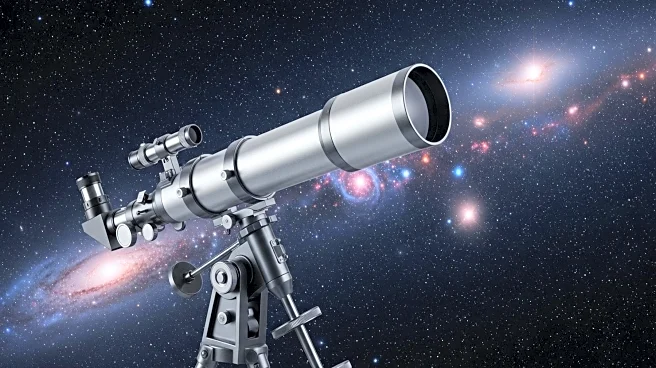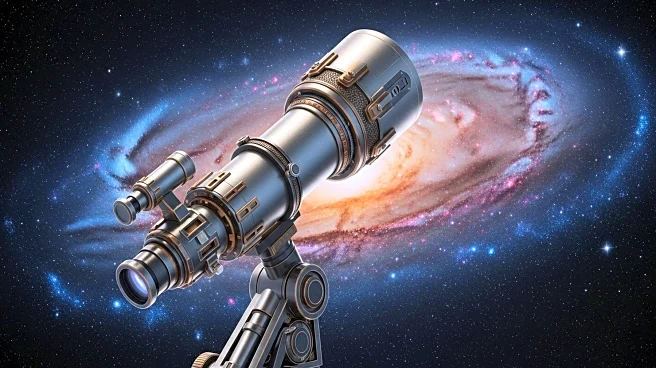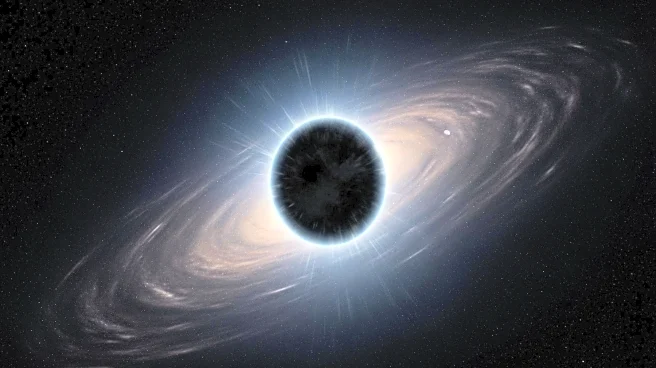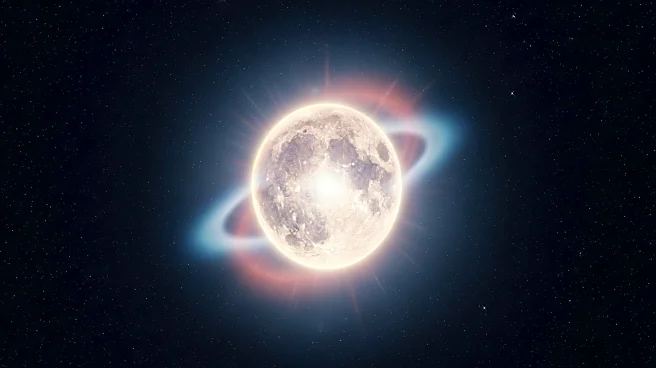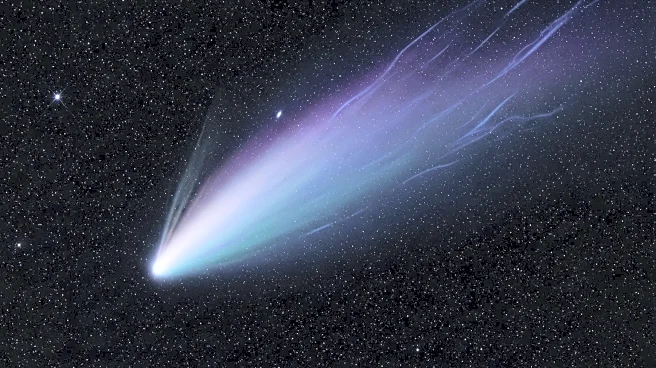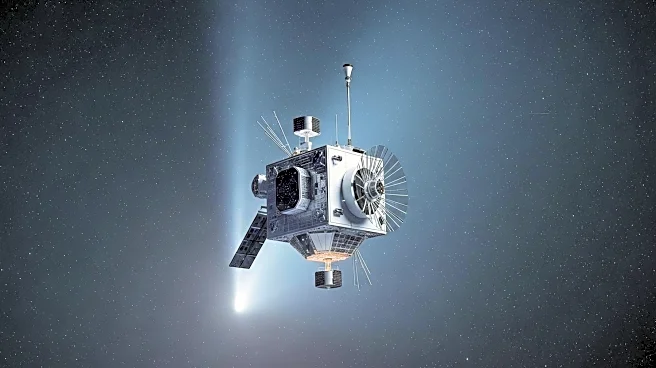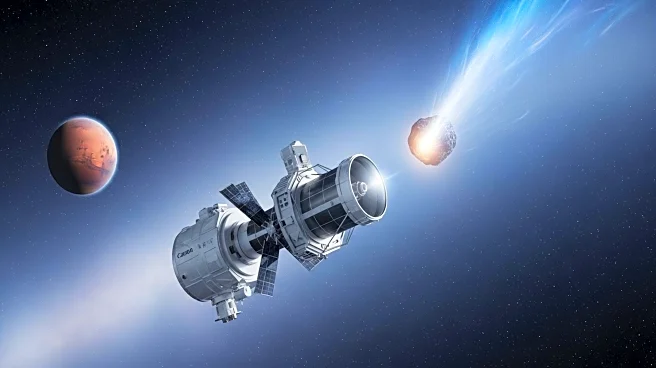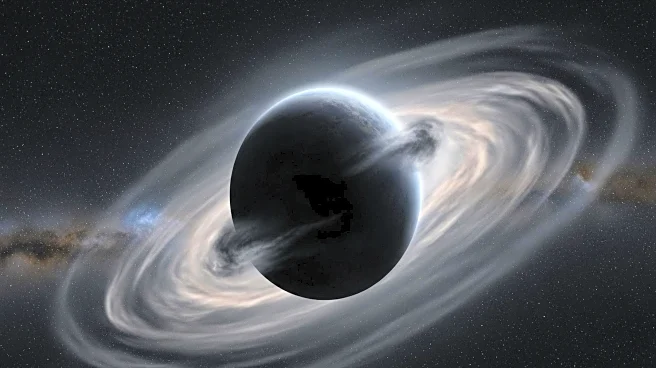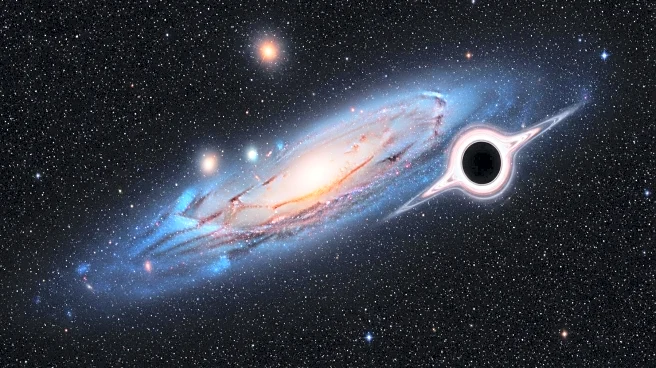What's Happening?
Astronomers have identified a colossal wave pattern within the Milky Way galaxy, using data from the European Space Agency's Gaia space telescope. This wave, affecting stars and cosmic dust, spans 30 to 65 thousand light years and emanates from the galaxy's center. The discovery was made by analyzing the position and velocity of over 20,000 young stars, revealing systematic radial and vertical motions. The wave's origin remains uncertain, with theories suggesting a past encounter with a dwarf galaxy or connections to the Radcliffe Wave.
Why It's Important?
This discovery provides new insights into the dynamic nature of the Milky Way, enhancing our understanding of galactic structures and behaviors. It may influence future research on galaxy formation and evolution, as well as the interactions between celestial bodies. Understanding these wave patterns can also aid in predicting cosmic events and their potential impacts on our solar system.
What's Next?
Further analysis of Gaia's data and other telescopic observations will continue to unravel the mysteries of the Milky Way's wave patterns. Astronomers may explore the implications of these findings on galactic dynamics and the potential for similar phenomena in other galaxies. Collaborative efforts between international space agencies could lead to more comprehensive studies and discoveries.
Beyond the Headlines
The wave pattern highlights the complexity and interconnectedness of cosmic structures, prompting discussions on the nature of the universe and our place within it. It may inspire philosophical and scientific inquiries into the forces shaping galaxies and the potential for undiscovered phenomena.

